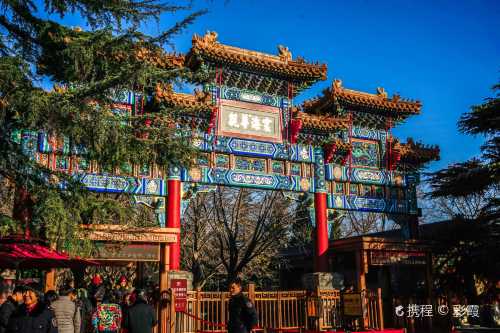App
Customer Support
Find Bookings
Popular Trip Moments
🏯 “Walk Through History: The Timeless Great Wall” | The Majestic Imperial Vault of Heaven | Where Prayers Touch the Sky : The Hall of Prayer for Good Harvest | Get in touch with the divine in the Circular Mound | 🏯 Summer Palace — Beijing’s Imperial Escape | Beijing Hilton, a treasure trove for family trips! | Walking Through Imperial Time: Summer at the Forbidden City | The Hyperloop is coming! Beijing to Shanghai in just 2.5 hours | My Experience at Beijing Jingli Hotel | Huangzheng Street Community | Nangong Wuzhou Botanical Paradise | The Ultimate Kid-Friendly Destination in Beijing | Beijing|See the Capital of China | Beijing·Liangma River—The Riverside Scene at Qingming Festival of East Beijing | That Year, I Gazed at the Sky in the Forbidden City and Embraced Summer in Thailand | Why Spirituality in China Feels Like Nowhere Else in the World | 🌿 Summer Palace – An Imperial Garden of Tranquility and Grandeur | Help! I found the ultimate hotpot in Beijing that even Chongqing locals endorse! | 🇨🇳 Standing in History – Tiananmen Square | Where Emperors Humbled Themselves: A Quiet Walk Through the Palace of Abstinence | How to spend 1 days in Beijing | Just outside Beijing lies a magical summer retreat triangle | Explore the luxurious residence of Heshen at Prince Gong Mansion | 🌿 Tranquility by the Lake – Summer Palace Escape | The Bird’s Nest: A Grand Legacy from the 2008 Olympics | the Great Wall of China | Climbing Longevity Hill: Discover the Soul of the Summer Palace | Hidden Lotus Paradise in the Summer Palace | 🛕 Lama Temple, Beijing – Peaceful but sacred in the middle of a big city | Beijing's Suburban "Little Switzerland" | Yanqi Lake Hiking + Cycling Travel Guide | Escaping to the Mountains After Work on Friday|Just 1.5h from Beijing to Jingyin Nanshan
Recommended Attractions at Popular Destinations
Popular Attractions in Bangkok | Popular Attractions in Manila | Popular Attractions in Tokyo | Popular Attractions in Taipei | Popular Attractions in Hong Kong | Popular Attractions in Seoul | Popular Attractions in Kuala Lumpur | Popular Attractions in Los Angeles | Popular Attractions in Shanghai | Popular Attractions in New York | Popular Attractions in Shenzhen | Popular Attractions in Osaka | Popular Attractions in Singapore | Popular Attractions in London | Popular Attractions in Guangzhou | Popular Attractions in San Francisco | Popular Attractions in Beijing | Popular Attractions in Macau | Popular Attractions in Bali | Popular Attractions in Jakarta | Popular Attractions in Paris | Popular Attractions in Ho Chi Minh City | Popular Attractions in Istanbul | Popular Attractions in Phuket | Popular Attractions in Chicago | Popular Attractions in Seattle | Popular Attractions in Toronto | Popular Attractions in Orlando | Popular Attractions in Cebu | Popular Attractions in Chiang Mai
Popular Restaurants in Beijing
Fu Chun Ju | The View 3912 | LA CHANSONNIÈRE | IL RISTORANTE - NIKO ROMITO | Siji Minfu Roast Duck (Gugong) | CAI YI XUAN | MIO | QUAN JU DE | Café Zi | Rive Gauche | China Grill | ZIJIN MANSION | JING RESTAURANT | Daccapo | MENKUANGHUTONGBAINIANLUZHU | NIU JIE JU BAO YUAN | King's Joy | Gastro Esthetics at DaDong | SHENG YONG XING ROAST DUCK RESTAURANT | Pan Gu Wen Qi Food | Made In China | AZUR | Lobby Lounge at Regent Beijing | Summer Palace @ China World Hotel | THE HOUSE OF RONG | Grill 79 | Yun Summer Lounge | Bo Jing Xuan Chinese restaurant | Redwall 1939 | 钓鱼台国宾馆芳菲苑
Popular Ranked Lists
Popular Best Things to Do in Daqing | Top 50 Must-Visit Restaurants in Koh Samui | Popular Best Things to Do in Dongtai | Top 50 Must-Visit Restaurants in Hong Kong | Top 10 Best Things to Do in Hechi | Top 50 Must-Visit Restaurants in London | Popular Best Things to Do in Dongying | Popular Premium Hotels Near Douglas County | Top 10 Luxury Hotels near Calasiao | Popular Best Things to Do in Panjin | Top 10 Best Things to Do in Weinan | Top 10 Best Things to Do in Huanggang | Popular Luxury Hotels Near Gagra | Popular Best Things to Do in Heze | Top 10 Luxury Hotels near Craiglie | Top 50 Must-Visit Restaurants in Munich | Popular Best Things to Do in Yuyao | Top 50 Must-Visit Restaurants in Phuket | Popular Best Things to Do in Zhaotong | Top 50 Must-Visit Restaurants in Rome | Top 50 Must-Visit Restaurants in Frankfurt | Popular Best Things to Do in Lichuan | Top 50 Must-Visit Restaurants in Changsha | Top 10 Best Things to Do in Danzhou | Popular Best Things to Do in Danba | Top 50 Must-Visit Restaurants in Chiang Mai | Top 50 Must-Visit Restaurants in Kyoto | Top 50 Must-Visit Restaurants in Bali | Popular Luxury Hotels Near Prienai District Municipality | Top 50 Must-Visit Restaurants in Singapore
About
Payment Methods
Our Partners
Copyright © 2025 Trip.com Travel Singapore Pte. Ltd. All rights reserved
Site Operator: Trip.com Travel Singapore Pte. Ltd.
Site Operator: Trip.com Travel Singapore Pte. Ltd.















